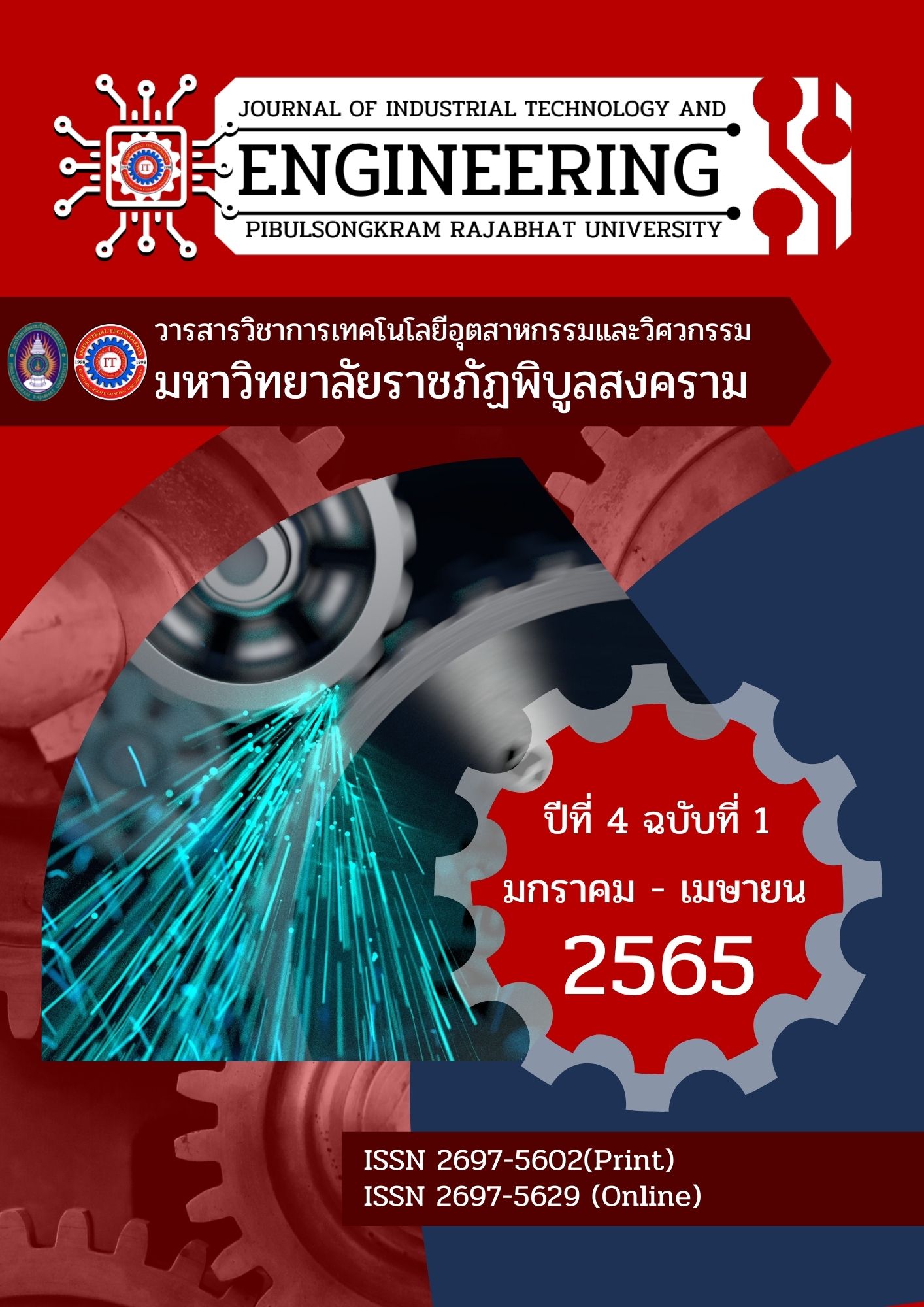DEVELOPMENT OF A DRYER USING BIOMASS AS FUEL
Keywords:
Drying, Biomass fuel, Dryer performanceAbstract
This research aims to develop biomass dryers with flame thermal conductivity techniques and smoke does not come into direct contact with food through heat exchangers. There is an increasing trend in cancer cases in Thailand, particularly stomach and colon cancer. Most of these cases are caused by the consumption of toasted, grilled, smoked, and fried foods. Frying specifically use oil repeatedly, that produce carcinogenic substances such as Heterocyclic Amines and Polycyclic Aromatic Hydrocarbon. The rainy season is also a problem in food preparation. Lack of sunshine and the wet weather result to poor quality food products. The dryer will allow use of heathier cooking and food preparation methods. The drying chamber has a capacity of 10 kg. It is has a heat exchanger between the combustion and drying zones, which allow for conduction, convection, and radiation heating techniques. Tree branches are used as fuel. Pork meat is used to test the biomass dryer performance. Drying is done at temperatures of 55, 60 and 65 ֯C and the air velocity inside the drying chamber varies at 1.0, 3.0 and 6.0 m/s. The studies showed that increasing drying temperature or air velocity result in an increase in the specific energy consumption (ranging of 0.12 – 0.29 kg of tree branches/hr), resulting to higher drying rate of between 0.05 – 0.08 MJ/kg. The dryer developed in this research can easily be moved allowing production of sun-dried pork anywhere at any time. However, it is still necessary to operate the dryer indoors for rainy season
References
Bosomtwe, A., Danso, J.K., Osekre, E.A., Opit, G.P., Mbata, G., & Armstrong, P. (2019). Effectiveness of the solar biomass hybrid dryer for drying and disinfestation of maize. Journal of Stored Products Research, 83(9), 66-72.
Doi: 10.1016/j.jspr.2019.05.011
Dhanushkodia, S., Vincent, H., Wilsonb, & Sudhakarc, K. (2017). Mathematical modeling of drying behavior of cashew in a solar biomass hybrid dryer. Resource-Efficient Technologies, 3(4), 359-364. Doi: https://doi.org/10.1016/j.reffit.2016.12.002
Elieser, T. (2018). Mathematical modeling and simulation of a solar agricultural dryer with back-up biomass burner and thermal storage. Case Studies in Thermal Engineering, 12, 149-165. Doi: 10.1016/j.csite.2018.04.012
Fabrice, A.N., & Yvette, J.N. (2017). Modeling and simulated design: A novel model and software of a solar-biomass hybrid dryer. Computers & Chemical Engineering, 104, 28–140. Doi: https://doi.org/10.1016/j.compchemeng.2017.04.002
Gowtham, M., Amrit, O.N., Manoj, T., & Ram, K.G. (2012). Design and analysis of biomass drying unit with waste heat. Procedia Engineering, 38, 1161–1165.
Hamdani, Rizal, T.A., & Zulfri, M. (2018). Fabrication and testing of hybrid solar-biomass dryer for drying fish. Case Studies in Thermal Engineering, 12, 489-496.
Doi: https://doi.org/10.1016/j.csite.2018.06.008
Henrik, H., Johan, I., & Risto, L. (2014). Minimization of total drying costs for a continuous packed-bed biomass dryer operating at an integrated chemical pulp and paper mill. Biomass and Energy, 71, 431-442.
Ida, B.A., Gede, B.S., & Made, M.I. (2020). Utilization of rice husk biomass
in the conventional corn dryer based on the heat exchanger
pipes diameter. Case Studies in Thermal Engineering, 22, 100764.
Doi: https://doi.org/10.1016/j.csite.2020.100764
Nawshad, H., & Michael, S. (2013). Techno-economic and environmental
evaluation of biomass dryer. Procedia Engineering, 56, 650-655.
Doi: https://doi.org/10.1016/j.proeng.2013.03.173
Ndukwua, M.C., Diemuodeke, E.O., Abamc, F.I., Abada, U.C., Nnanna, E., & Simo, T.M. (2020). Development and modelling of heat and mass transfer analysis of a low-cost solar dryer integrated with biomass heater. Application for West African Region Scientific African. 10, 1-12. Doi: 10.1016/j.sciaf.2020.e00615
Ndukwu, M.C., Simo, T.M., Abam, F.I., Onwuka, O.S., Prince, S., & Bennamoun, L. (2020). Exergetic sustainability and economic analysis of hybrid solar-biomass dryer integrated with copper tubing as heat exchanger. Heliyon, 6(2), 1-12.
Doi: https://doi.org/10.1016/j.heliyon.2020.e03401
Pathipat, T., Pakamon, P., & Kajorndaj, P. (2017). Utilization of biomass energy in
drying of glutinous rice crackers. Energy Procedia, 138, 331–336.
Doi: 10.1016/j.egypro.2017.10.131
Rabha, D.K. (2021). Performance investigation of a passive-cum-active dryer with a biomass-fired heater integrated with a plate heat exchanger. Renewable Energy, 169, 598-607. Doi: https://doi.org/10.1016/j.renene.2020.12.126
Sonthawi, S., Phaochinnawat, C., Kitti, F., Pairoj, K., Anil, K., & Perapong, T. (2016). Computational fluid dynamic analysis of innovative design of solar biomass hybrid dryer: An experimental validation. Renewable Energy, 92, 185-191.
Doi: https://doi.org/10.1016/j.renene.2016.01.095
Sumeet, A., Dipti, P.M., & Shailesh, K.S. (2020). CFD supported performance analysis of an innovative biomass dryer. Renewable Energy, 159, 860-872.
Doi: https://doi.org/10.1016/j.renene.2020.06.039
Yahya, M., Ahmad, F., & Kamaruzzaman, S. (2017). Energy and exergy analyses of solar-assisted fluidized bed drying integrated with biomass furnace. Renewable Energy, 105, 22-29. Doi: 10.1016/j.renene.2016.12.049



